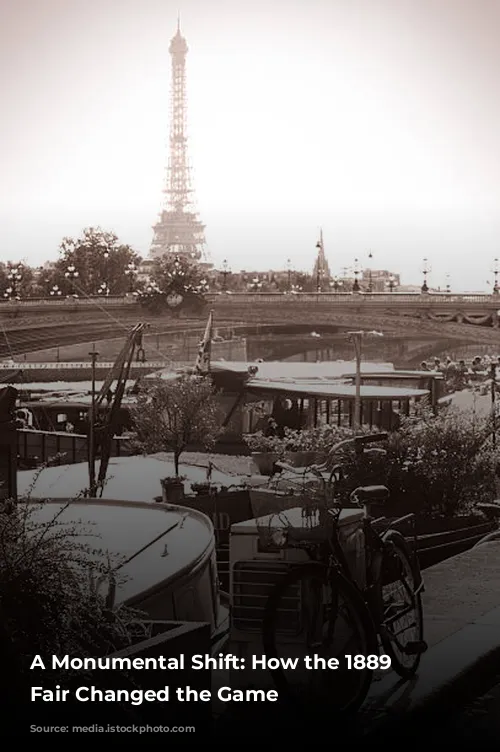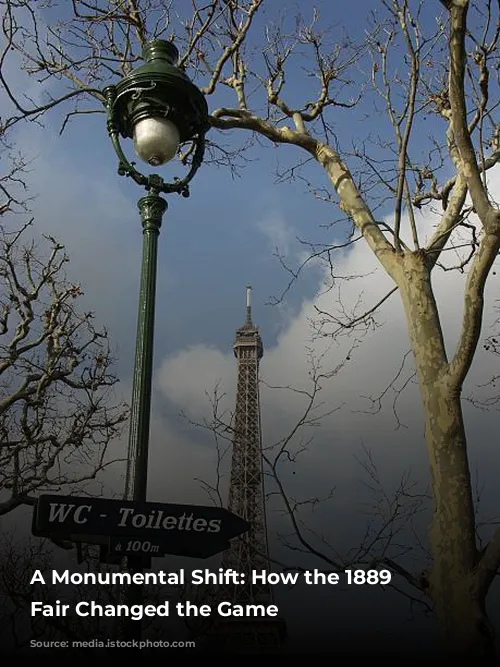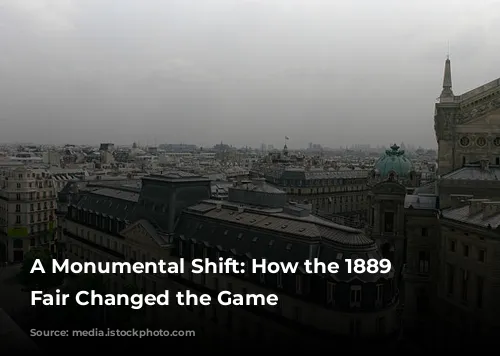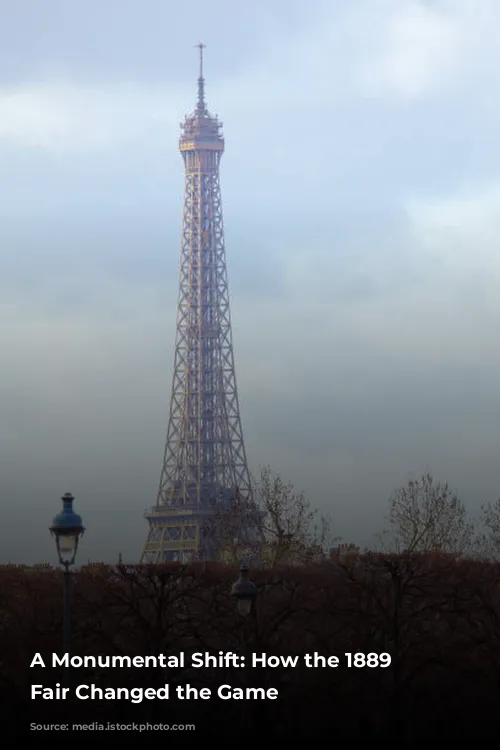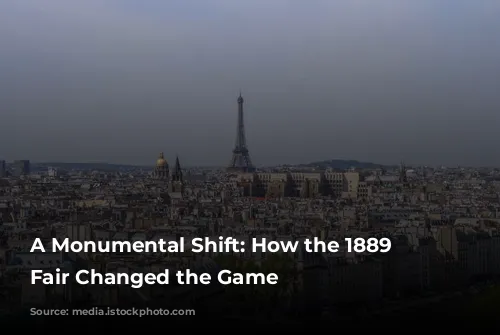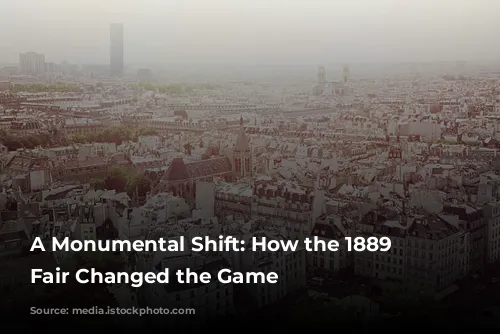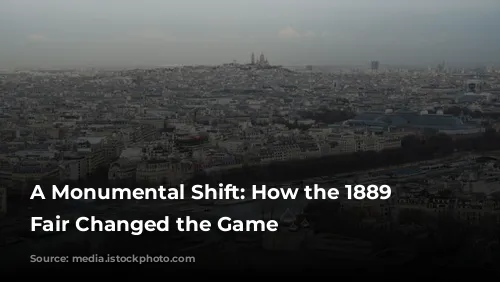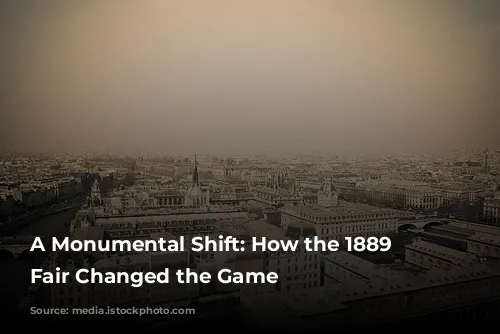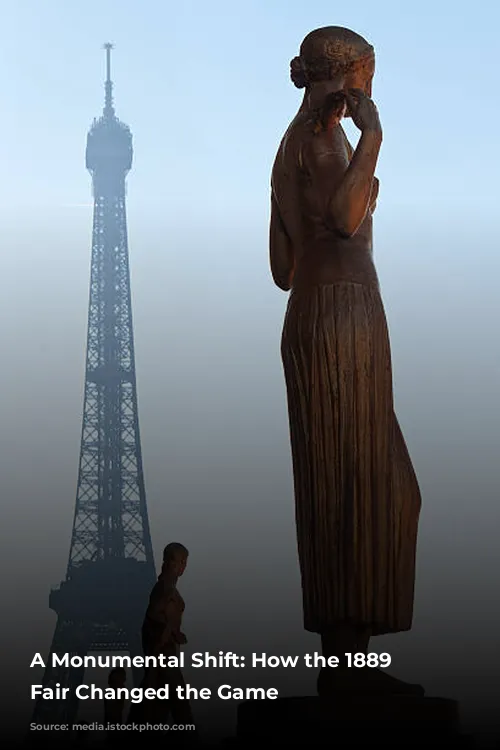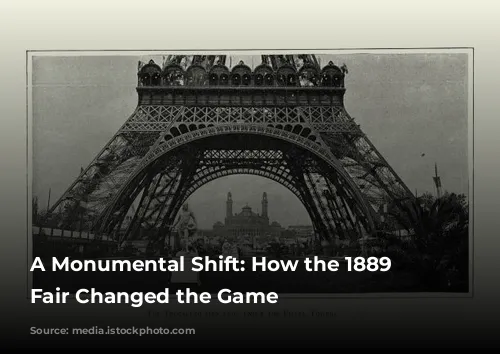The 1889 World’s Fair in Paris wasn’t just another exhibition. While its legacy might seem less impactful than the Eiffel Tower, it was a turning point in the evolution of these grand events. Before 1889, these world fairs were primarily about showcasing national pride and progress. But this exhibition in Paris became something much bigger, signaling a new era of innovation and spectacle.
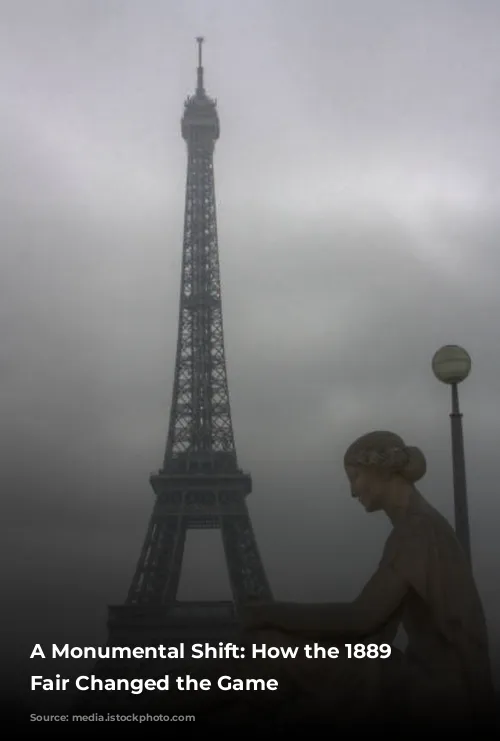
From Humble Beginnings to Monumental Displays
The story of these international exhibitions begins in London in 1851. A groundbreaking event, it featured a colossal building made entirely of iron, wood, and glass. France, not to be outdone, quickly followed suit, building a grand palace on the Champs-Élysées in 1855. This early ambition culminated in the 1867 exhibition, where a gigantic oval structure, accompanied by smaller pavilions, dominated the Champ de Mars.
The 1878 exhibition saw the construction of the Trocadero Palace, with its imposing wings flanking a massive concert hall. The Champ de Mars was also graced with glass galleries, showcasing intricate designs but lacking the grandeur of previous exhibitions.
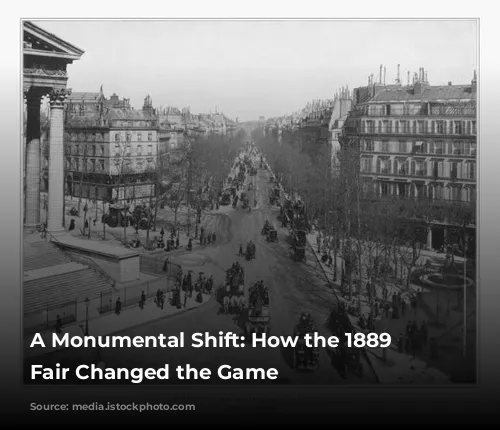
A Celebration of Innovation and Empire
The 1889 World’s Fair was a spectacle unlike any before it. Celebrating the 100th anniversary of the French Revolution, it served as a platform for showcasing national industry and the burgeoning colonial empire. Spread over an impressive 125 acres, the exhibition borrowed elements from its predecessors, featuring galleries on the Champ de Mars and pavilions scattered throughout the gardens.
The event was also a showcase for technological advancements, with two monumental structures: the Galerie des Machines, the largest building in the world at the time, and the Eiffel Tower, the tallest structure ever built. The former was dismantled in 1909, while the latter, thanks to the efforts of its creator, Gustave Eiffel, became a lasting symbol of the exhibition.

A World of Wonders: Exploring the Exhibition
The 1889 World’s Fair attracted over 32 million visitors in just six months. While a mere two million climbed the Eiffel Tower, the event drew huge crowds, with a record of 400,000 visitors in a single day. For one franc, visitors could explore the wonders of the exhibition. An additional five francs granted access to the iconic tower. Over 61,000 exhibitors, more than half French, presented their artistic and industrial creations.
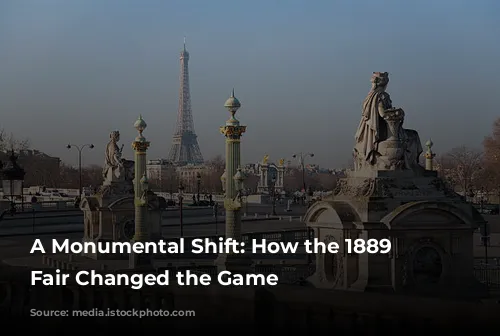
A Lasting Legacy: Beyond the Eiffel Tower
While many of the structures were dismantled after the exhibition, its impact lingered. The 1889 World’s Fair served as a platform for showcasing innovations like electricity and the telephone, giving the general public a glimpse into the future. The exhibition was a stunning spectacle of metal frameworks, ceramics, terracotta, and stained glass, creating an unforgettable experience for its visitors.
Although only the Eiffel Tower stands as a physical testament to the 1889 World’s Fair, its legacy lives on in the way it transformed the concept of international exhibitions. It marked a shift from simple showcases of national pride to celebrations of innovation and progress, setting the stage for future world fairs that would continue to amaze and inspire.
